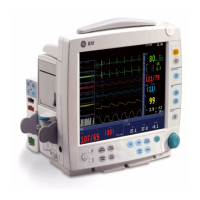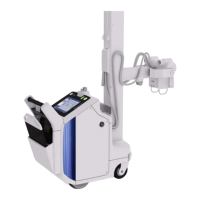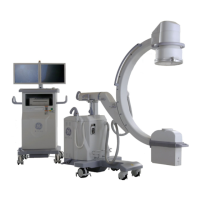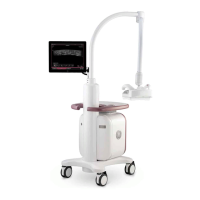GE HEALTHCARE
DIRECTION 5461425-8EN, REVISION 6 BRIVO XR118 SERVICE MANUAL
Chapter 6 - - Calibration Page 157
3.) Visible WC and WW Values
a.) No-Burn Mode (PACS Test Image 1)
i.) The DICOM header of each PACS Test Image is always sent with WC/
WW=5226/2654.
ii.) The values displayed on the PACS side may appear differently. This is
acceptable according to DICOM standards. The values can show up as 8192/
16384, 5226/2654, or something else. The most common and preferred
implementation is to show values of 8192/16384 on PACS.
iii.) If the values do not appear as 8192/16384:
• Check that the VOI-LUT is being enabled on PACS. The VOI-LUT can often
be enabled on PACS with a drop-down menu on the image, or through
hanging protocols.
• This does not indicate that the PACS does not support VOI-LUTs. Support
for VOI-LUTs is strictly determined by the visual appearance of PACS Test
Images 1 and 6.
iv.) Record results in Table 6-2, line number 7
b.) Burn-on-Send Mode (PACS Test Image 6)
• PACS displays 8192/16384 for every image.
• Record results in Table 6-2, line number 8
4.) Image Saturation
Open the PACS Test Image 1 and check that the clinical chest area appears with no saturation
in the lung region or the abdomen region. Saturation appears as a completely flat dark or white
area. Record results in Table 6-2, line number 9.
5.) Reduced Dynamic Range with Burn-on-Send
The Burn-on-Send configuration causes a reduced dynamic range in the image when the user
changes the window-level of the image on PACS.
Note: The images appear identically when first viewed. The loss of dynamic range only occurs when
the user changes window-level.
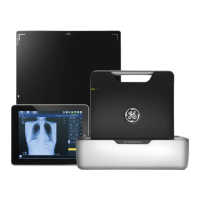
